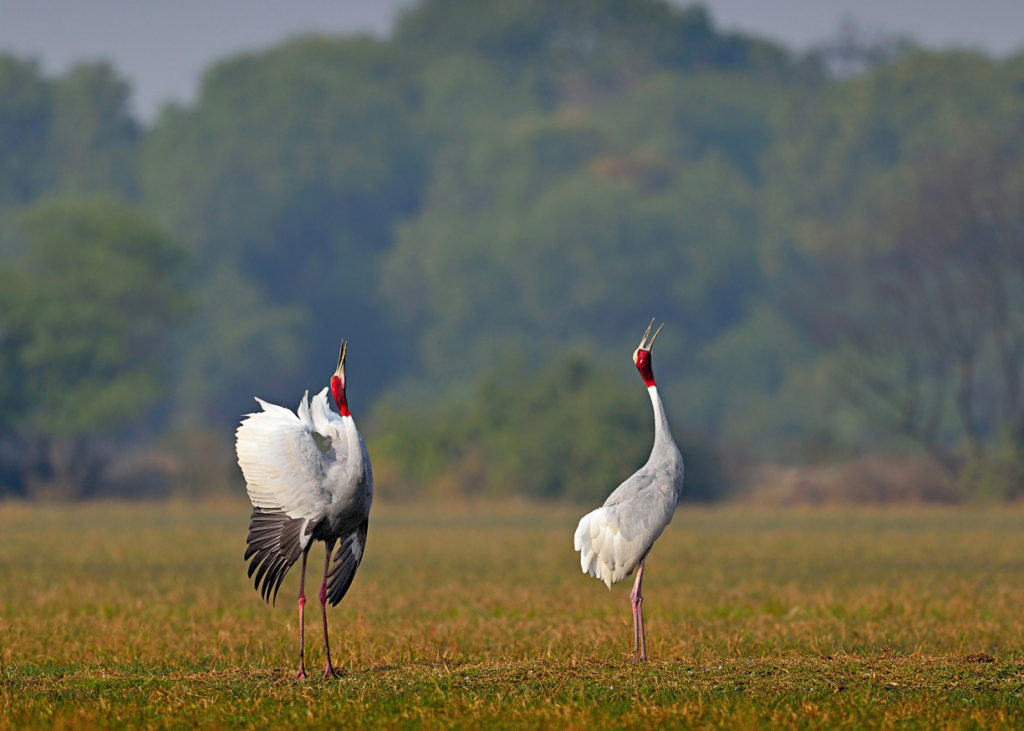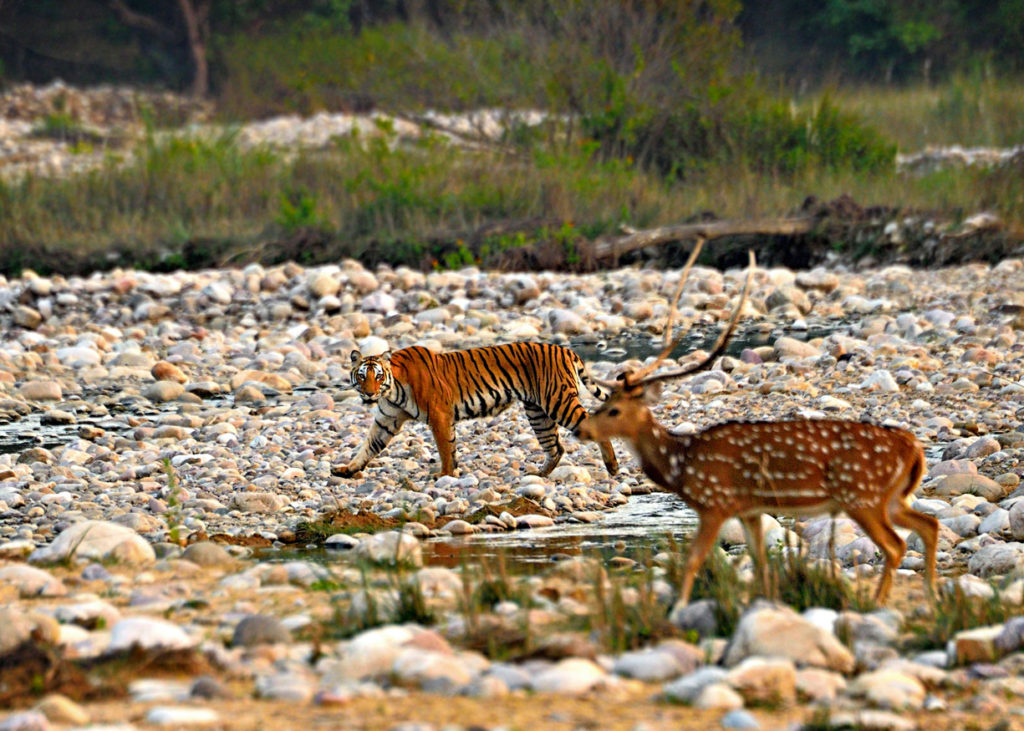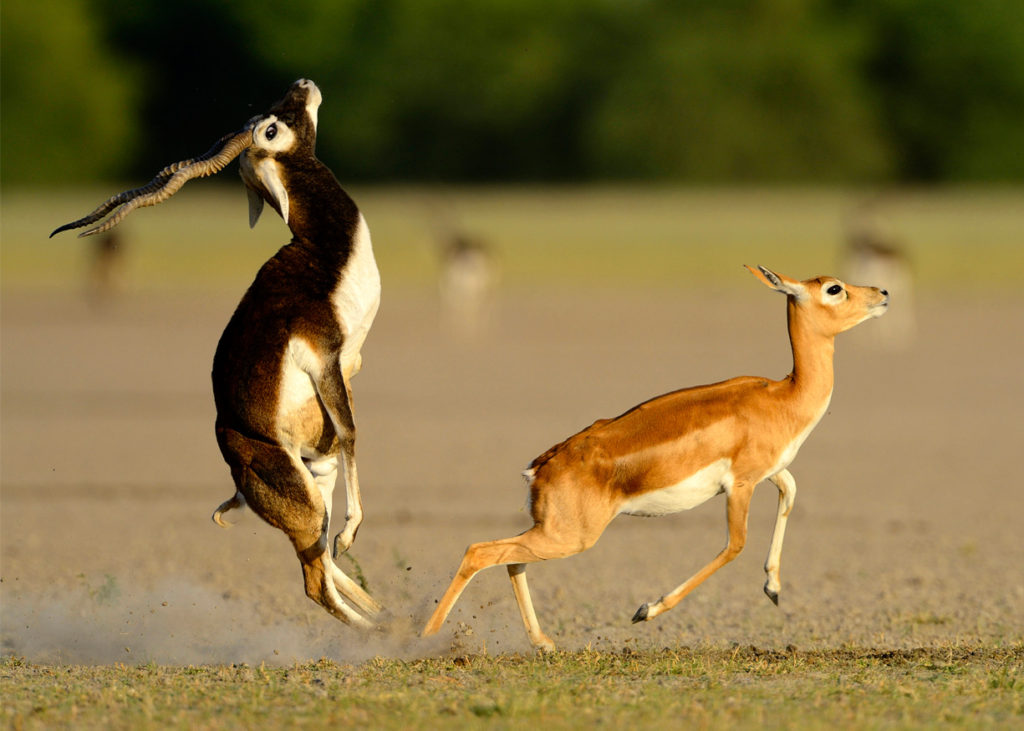
A hearty welcome to PT Explorers! Rathika, we are thrilled to have you join us.
Thank you for the invite, it is my pleasure. I am Rathika Ramasamy, Wildlife Photographer from Chennai, India. I grew up in Venkatachalapuram, a small town in Theni district in Southern Tamil Nadu, India. Much of my childhood was a traditional upbringing focused on going to school and studies that led to a Bachelor’s degree in Computer Engineering (B.E) and a Master’s in Business Administration (MBA) after that. I have been in this field for last 15 years. I specialize in birds, though I love to shoot mammals like Elephants and big cats. I’ve been to most of the National parks in India, and to those in Africa. For, wildlife photography is not only my passion, but a powerful medium to help conserve nature. I regularly conduct wildlife photography workshops and hold talks all over India.

How did you journey from a Software Engineer to a Wildlife photographer?
For me, Photography is an interest that started as a hobby way back in school and has since developed into a passion. It started with my father gifting me a camera when I was in high school and back in those days it was a film camera. I would shoot everything I saw – trees, flowers, whatever I could capture, mostly in my backyard. Camera was my constant companion wherever I traveled. My parents were very supportive of my interest in photography and their encouragement was a key factor in sustaining my interest. In 2003 I had an opportunity to visit Bharatpur, maybe better known as the Keoladeo Ghana National Park. After seeing the birds, I wanted to capture images of the birds so that I could enjoy seeing those again. Being in nature was a feeling that was absolutely fascinating. It was after this first experience that I invested in my first tele lens and did a lot of reading on animals and birds, their habitats and everything else I could know about them. There is no substitute for field work though and being self-taught, spending hours shooting in the field was an invaluable part of this learning curve. New Delhi, where I lived, is surrounded by many bird sanctuaries and national parks, and is the main route for migratory birds. This gave me plenty of opportunities to shoot birds, and I started to specialize in bird photography. I think they are the most beautiful living species in God’s creation. I am in love with them.

We find it rare to see professional female Wildlife Photographers based in India. Is it challenging in this field in that part of the world? What are the challenges that you face?
When I started wildlife photography, it was a nascent profession. Monetary benefits were very less. Of course, it is very challenging to be a wildlife photographer, with costly forest safaris, expensive equipment’s. It took me four years to buy my 600mm prime lens. Initially I did other genres of photography – Travelling and Concept photography for publishing firms, as I had equipment and time to do that. Fortunately, with my family’s support I could continue even though the returns were nothing at times. It took years to establish. Wildlife teaches you how to have patience and perseverance.
You’ve released two books – “Bird Photography” and “The Best of Wildlife Moments”. Can you tell us more about them please?
In those days there were very few good coffee table photo books by Indian photographers. In 2010, I published my first photo book on “Bird Photography”. It was my first attempt to bring out the good photos of Indian birds in a book, that had a collection of my best bird profile images. In 2014, I published “The Best of Wildlife Moments”, a photo book of Wildlife moments from my collection. This book has over 150 images of 75 species. All images were taken in their natural habitat. While the first book was all about profile shots, this one featured all action images of birds and animals, part of my favourite wildlife moments I have seen and captured.

How would you describe your photography style ?
Wildlife photography for me is a medium to connect with nature. I always look for a story in the subject I want to shoot, and I try to capture some emotion or interaction in my subjects. I love to shoot them in their best moods and unique characteristics. Even in simple profile shots, I look for different lighting or some interesting posture of the subject. I make sure all my images are high on technical quality and aesthetical composition.
How did you feel when “The Birds of India” (an Indian based bird-lover community) chose you as one of the top 20 best photographers of India, in 2008? Not to mention that you were the only woman to receive the distinction in its entire existence.
Bird photography is my passion and I am enjoying it. I was very happy, as any appreciation and recognition from your own community is special. I was even more motivated to do good quality work.

You have some breathtaking photographs of birds and mammals. What are some important factors to consider while taking action or intimate photographs of wildlife? (i.e. Behaviour for example).
Most of the shoot will be in the wild and natural habitat. As wildlife won’t give us much time to think, we should be very fast to shoot them.
It is very important to have in-depth knowledge of animals and birds, and their behaviour pattern and habitats. When waiting to capture shots which show action, one must anticipate the action and click at the right moment before the action happens. If one waits to see what will happen, we will miss capturing the ‘decisive’ moment.
Never take the eye away from the viewfinder. While waiting, check your camera settings, and take a test shot. Don’t go very close to the animals; always give some space around the subjects so that if it takes off or any action happens, you can frame them without cutting off any part of the body. Respect your subjects; never ever enter beyond their comfort zone. If you feel they are disturbed, give them some time to get used to your presence. For close-up shots, wait for eye contact, which gives a special connection between the subject and the viewer.

Can you give our readers your best wildlife & bird photography tips?
*Technical knowledge should be your second nature
*Plan your shoot well in advance.
*If it is bird photography, get a checklist of the birds; if you target any particular species, find out where and when is the best time to photograph.
*If it is a big cat safari, book a good driver who has knowledge of photography, because he is going to give you point of view in the field.
*Always check the settings and take one test shot.
*Once you are done with the documentation shot, watch through your viewfinder .
*Focus on eye, for birds try to catch light in the eyes.
*Wait for the right moment to capture them in action
*For birds, first try to capture a habitat shot, then go for close-up. Try different POVs and move around to get the best POV.
*Check all possible locations for the best image.
*Don’t lose your subject, keep it clutter free, avoid featureless sky.
*For animal portraits, try for eye contact
*Keep the composition simple, fill the frame
*Check your histogram and be aware of blinked highlights
*Meter for highlights, and in case of tricky lighting, use spot metering
*For sharp images use a tripod or monopod.
*Visualise few possible frames in mind and frame your shot aesthetically.

Do you have any recommendation on camera settings or gear for bird photography specifically?
I shoot in raw format using manual exposure mode; for bird photography, I use continuous focus.
I often use recall shooting functions and custom settings f1 (custom control assignment). I assign one button for grid display, and one button for F2 for group area AF. These settings help to capture the image with different lighting conditions, without taking the eye away from your viewfinder.
What are your thoughts on keeping photography simple – such as shooting at eye level and taking the background into consideration
I always insist in keeping it simple; don’t clutter your frame with distractive elements. Crouch down to animal’s eye level as eye level photography is one of the important rules in composing your animal shots. It helps to get eye contact from your subject, and images will become strong. While shooting water birds, one must keep the camera on ground, so that the background gives you creamy clear bokeh.

Do you have a single special highlight or moment in your encounters with birds?
Though I have many special moments, the one in which a Rose-ringed parakeet pair attacks a monitor lizard is my favourite. It was the most printed image of my works and received a lot of appreciation. I was once shooting migratory fowls in Keolodeo National Park, Bharatpur. While I was kneeling on the ground to shoot them, all of a sudden, I saw something hurrying towards me. I turned my lens to see what that was. I was astonished to find a Monitor lizard running for its life as a pair of Parakeets were fiercely attacking it and trying to bite its tail. Lizards are typically lazy and content with sun basking, and Parakeets are usually peaceful and keep to themselves. Here the Parakeet pair was driving away the lizard that was looking to steal the eggs. After the scared Lizard disappeared into nearby bushes, the Parakeets kept watch till they were sure that it would not come back. This was the first time I witnessed Parakeets being aggressive. It reminded me of how animals and birds too are protective of their babies.
What are the differences in photographing a single bird versus birds in pairs or in a flock? How do you make sure that you get that sharp focus?
Focusing and getting sharp images of a single bird is easy. If it is a flock, you must shoot with deep depth of field. If two birds or a flock is perching on the same focal plane, then you get all of them in sharp focus.
But when they are in different focal planes, increase the depth of field with a higher aperture like f /9 f/ 10 or at times, more than that.

What about missed opportunities in your wildlife photography journey – is there anything you can recall in mind?
Many times. For example, in Corbett, I always wanted to capture a tiger in misty back ground, but missed the chance. In Bharatpur, I missed shooting six Spotted owlets sitting closely on a tree branch.
Having photographed in so many wildlife areas, is there an iconic location that you hold close to your heart that you keep going back to?
Keoladeo National Park, Bharatpur, Rajasthan is one of my favourite places to photograph birds. It is very special to me; I fell in love with birds for the first time at this park. It is a paradise for bird lovers and photographers
Let’s chat about your wildlife photography safaris for a minute. What is a typical one-day safari like?
My day starts with waking up at five am. In Indian national parks, I will start the safari at six am and go around till ten am. Thereafter, I return and have my breakfast. I then download the images I had shot and do a quick check . I then have lunch, take some rest, and get ready for the afternoon safari, which is from two pm to six pm.

Was there ever a time when you felt like you were in danger on a photography expedition?
My trip to Jim Corbett National Park in 2005 was the most adventurous trip. I had a hair-raising experience when an elephant came charging at full speed towards our vehicle.
Of the countless photographs you have taken, do you have an all-time favorite?
I have many favorites, and it is tough to choose one. If I have to choose one image, then it is that of a territorial fight between two Indian darters ( Anhinga melanogaster ) at Keoladeo National Park, Bharatpur, India.
What is your view on nature conservation and climate change? How can we, as wildlife photographers, help to protect our planet?
Our health is dependent on pure air, water and food. These elements get affected when biodiversity of our planet is negatively impacted. It is OUR responsibility to keep the balance and maintain our biodiversity. Deforestation and pollution and encroachment of water bodies and wetlands are all leading to destruction of the natural habitats of animals and birds.
I always believe that each and every nature or wildlife photographer is a wildlife ambassador. We must use our photographs to create more awareness about the importance of conservation. Top photographers can contribute their images for conservation campaigns and share beautiful images with social messages on social media. Along with their commercial workshops, they can give free talks on conservation to school and colleges. They can also give their photographs free to NGOs working towards conservation.

What plans do you have in the future in relation to Wildlife Photography?
I am already conducting wildlife photography workshops and talks at colleges/universities and sharing the importance of wildlife and habitat conservation. I will be visiting more colleges and schools and continue this activity. As the next generation, if the youth realize the value of our natural resources, it would be in safe hands in the future.
What would you say is your greatest achievement in your photography journey?
In the year 2017, among photographers popular on the internet across the world, I was cited as the number one woman photographer. Most of my photographs are shot in India, and I am happy that our animals and birds are liked and appreciated globally. (Source Top 100 photographers on the webwww.xxlpix.net. As per the xxlpix website, the Web Popularity Index (WPI) takes into consideration the three key factors of the social web: reach, interaction with users, and external references. Thousands of social media and web indicators for popular photographers of the present day were collected during the survey period and evaluated for the creation of the index. We analysed: fans, followers and subscribers on Facebook, Instagram, Twitter, Pinterest, Flickr, Tumblr, 500px and other social networks, ratios for interaction with subscribers, fans and followers, as well as references for the photographers’ publications.
Finally, what kind of equipment do you use and is there a specific reason why you choose it over other possibly similar equipment?
My main camera is Nikon D5, and second bodies are Nikon D4s and Nikon D3. All are full frame cameras, and their ISO performance helps me to shoot in low light conditions, which is the case in the early mornings and late evenings. Good auto focus system of D5 and higher FPS (frame per second) helps to shoot action. For bird photography, I use a telephoto Nikkor AF-S 800mm F/5.6G ED VR & Nikon TC-14E II. And I use a Nikkor AF-S 80-400mm f/4.5-5.6G ED for shooting wild animals.

Rathika was born in a village near Theni in the south of India. She has always had a fierce connect with nature and turned this morphed into a full time career in nature photography while on a visit to Bharatpur Bird sanctuary in 2003. Rathika is arguably one of India’s foremost wildlife photographers and has...
By Ata Hassanzadeh Dastforoush | Photos by Ata Hassanzadeh Dastforoush
PT Explorers 5 Minutes read
ReadEmail: email@pawstrails.com